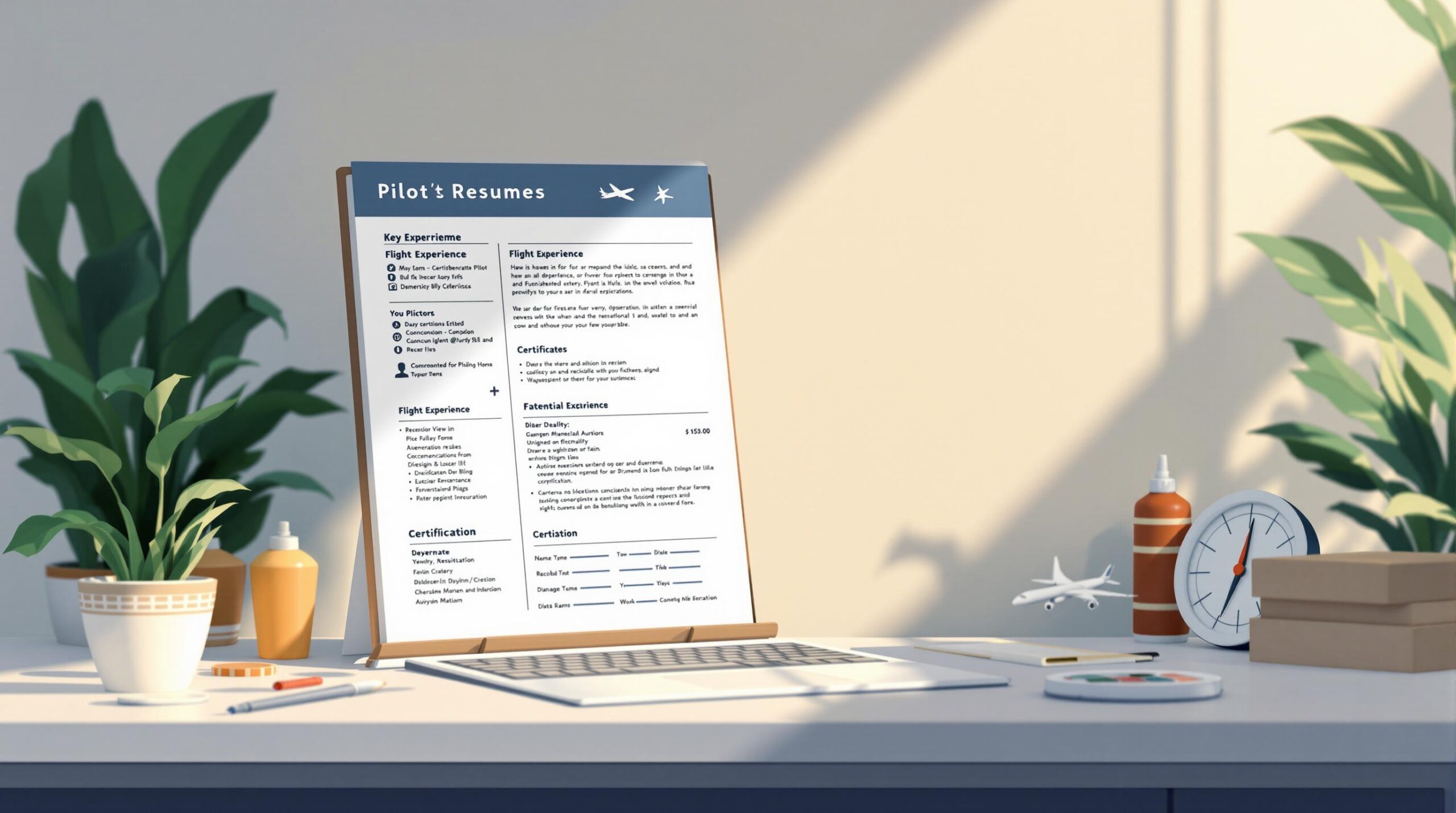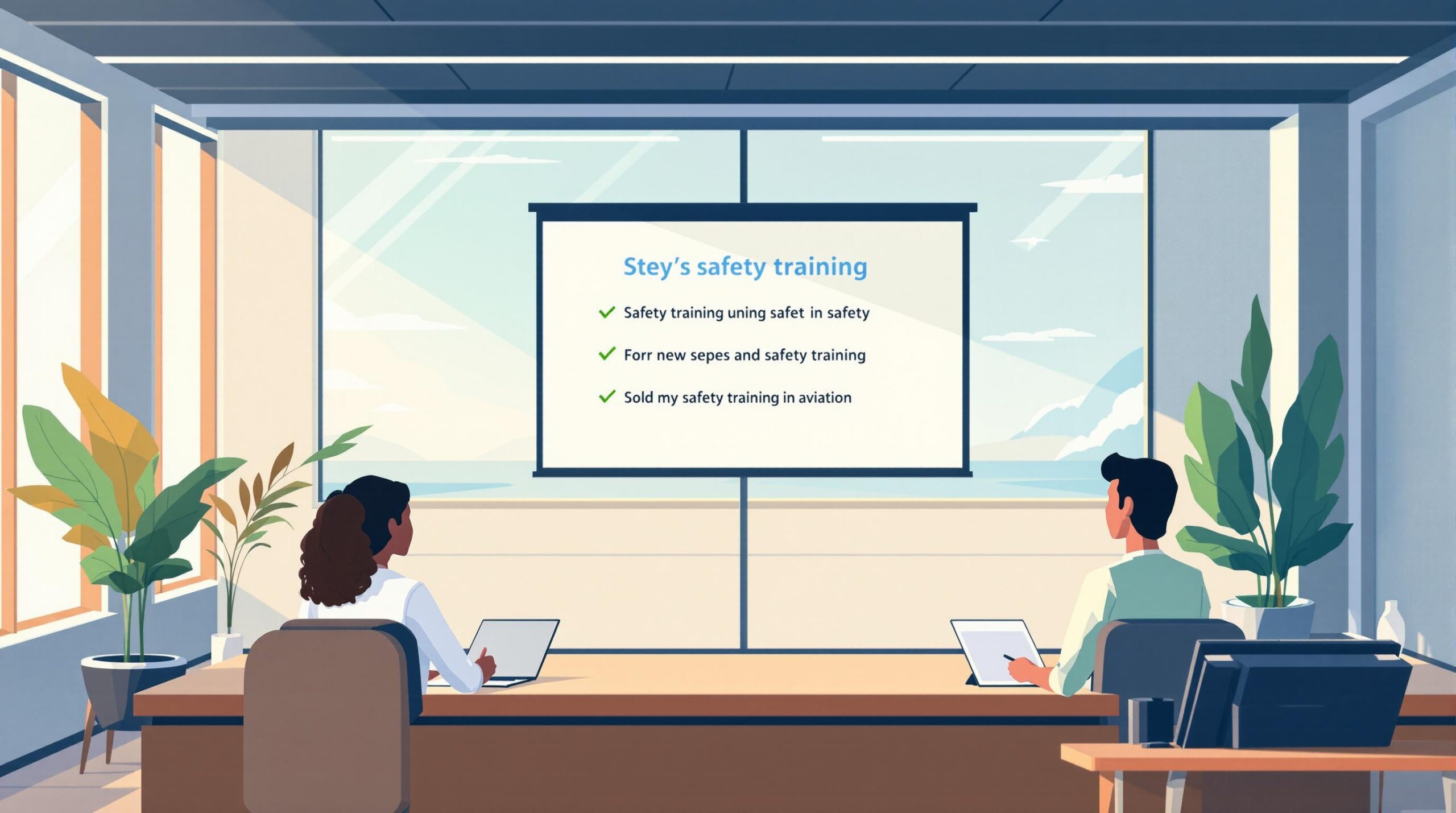Pilots use LinkedIn to grow their careers by boosting visibility, networking with industry professionals, and finding job opportunities. Here’s how:
- Showcase Credentials: Display licenses, certifications, and aircraft expertise to stand out to recruiters.
- Build Connections: Join aviation groups, engage with industry leaders, and connect with recruiters.
- Job Search Tools: Use job alerts, company research, and application features to simplify the hiring process.
Linkedin: Navigating a Pilot’s Professional Profile
Creating a LinkedIn Profile That Stands Out for Pilots
Your LinkedIn profile acts as your digital aviation resume and personal brand. It’s a key tool for connecting with others in the aviation industry and catching the attention of recruiters. To make an impact, focus on the details that matter most to aviation professionals.
Writing a Strong Headline and Summary
Your headline should clearly showcase your role, certifications, and expertise. For example: "ATP-Licensed Pilot | Boeing 737 Captain | CFI/CFII."
In your summary, provide a concise overview of your career. Include details like total flight hours, aircraft experience, leadership roles, safety records, and your career goals.
Highlighting Licenses, Certifications, and Aircraft Experience
Use the ‘Licenses & Certifications’ section to list your qualifications. Include the type of certification, issuing authority, and current status (e.g., "ATP, FAA, Active").
In the experience section, go into specifics about your aircraft expertise and roles. For each position, mention:
- Aircraft model and variant
- Your role (e.g., Captain, First Officer)
- Total hours on type
- Special qualifications or endorsements
- Key responsibilities or achievements
Adding Skills and Getting Endorsements
Showcase aviation-specific skills, such as flight operations, crew resource management, aviation safety, aircraft systems, emergency procedures, and flight planning. To strengthen your profile, ask colleagues or supervisors to endorse these skills.
Engaging in aviation-related groups and discussions on LinkedIn also signals your active participation in the industry and helps build connections.
With a polished profile, you’re better positioned to connect with the right people and expand your professional network.
Expanding Your Network on LinkedIn
Building a solid professional network is key to advancing your aviation career. LinkedIn offers pilots a platform to connect with industry professionals and uncover opportunities.
Reaching Out to Recruiters and Industry Professionals
Use keywords like "aviation recruiter" or "airline hiring manager" to find relevant contacts. Being proactive in reaching out can increase your visibility and open doors to opportunities that may not be publicly listed.
When sending connection requests, include a short, personalized message. Highlight:
- Your current role and experience
- Why you want to connect
- Any mutual contacts or shared experiences
For instance: "Hi [Name], I’m a B737 Captain with over 5,000 hours of flight time. I’d love to connect and learn more about opportunities at [Airline]."
Joining Aviation Groups and Staying Active
LinkedIn groups are a great way to network and stay updated on industry trends. Here’s how to make the most of them:
- Engage in Discussions: Answer questions and share insights on topics like flight operations, safety, or industry news.
- Post Relevant Content: Share articles or updates on aviation trends, regulatory changes, or other industry news to keep your profile active and connect with peers.
For military pilots transitioning to civilian roles, groups focused on certifications and airline hiring can be especially helpful.
When participating in discussions, aim to provide thoughtful contributions rather than focusing on self-promotion. Engaging with others’ posts and comments can help you build genuine professional relationships.
sbb-itb-de05b1b
Using LinkedIn to Find Job Opportunities
LinkedIn offers pilots a range of tools to explore and pursue aviation careers. Its features simplify the job search process and provide helpful insights to prepare for interviews.
Finding and Applying for Jobs on LinkedIn
LinkedIn’s job search feature helps pilots locate relevant opportunities through targeted searches. You can set up job alerts using keywords like pilot, aviation, or airline to stay updated on new listings. Filters allow you to refine results by location, experience level, or company size.
Here are some tips for applying:
- Enable the ‘Open to Work’ option to signal your availability to recruiters.
- Use the ‘Easy Apply’ function for a quick application process.
- Check analytics to see who’s viewing your profile and engaging with your content.
These tools not only help you apply efficiently but also offer insights into how recruiters interact with your profile, allowing you to adjust your approach as needed.
Researching Airlines and Preparing for Interviews
Once you’ve identified potential roles, LinkedIn becomes a valuable resource for interview preparation by offering detailed information about your target companies.
Focus your research on these areas:
| Area | Purpose |
|---|---|
| Company Insights | Stay informed about company updates, values, and culture to show awareness |
| Career Path Research | Understand employee career paths to gauge advancement possibilities |
To prepare effectively, consider:
- Following industry leaders for updates on hiring trends.
- Reviewing recent company announcements or developments.
- Analyzing typical career trajectories within your target airlines.
Using Tools Like Pilot Pathfinder Alongside LinkedIn

LinkedIn is a powerful platform for networking and gaining visibility in the aviation industry. But pairing it with specialized tools like Pilot Pathfinder can take your career management to the next level. While LinkedIn connects you with industry professionals, Pilot Pathfinder ensures your job applications and documentation are polished and efficient.
Features of Pilot Pathfinder That Help Pilots
Pilot Pathfinder offers a set of tools designed to simplify the job search process and complement your LinkedIn efforts. Here’s a quick look at what it brings to the table:
| Feature | How It Helps Pilots |
|---|---|
| Application Automation | Speeds up airline applications with a browser plug-in |
| Logbook Integration | Provides secure storage and standard formatting for flight records |
| Resume Builder | Offers aviation-specific templates tailored for the industry |
| Interview Preparation | Includes resources for airline interview readiness |
These features are especially handy for pilots actively seeking new opportunities. The automated application system connects directly with airline career portals, saving you time that can be better spent building connections on LinkedIn.
Helping Military Pilots Transition to Civilian Careers
Transitioning from military to civilian aviation comes with its own set of challenges. Pilot Pathfinder simplifies this process by converting military flight records into formats recognized by airlines, ensuring your experience is properly showcased.
Key benefits include:
- Automatic conversion of military flight hours into airline-standard formats
- Secure storage for all logbook data
- Standardized formatting for job applications
Conclusion: Using LinkedIn and Tools to Grow Your Aviation Career
Optimizing your LinkedIn profile and using aviation-focused tools can help pilots boost their visibility, expand their network, and find career opportunities more effectively. LinkedIn serves as a bridge to connect with industry professionals, while platforms like Pilot Pathfinder simplify applications and prepare you for new roles.
This approach tackles both the networking and technical sides of career progression, helping pilots stay ahead in an ever-changing industry. Keeping your LinkedIn profile polished and active is key to standing out in aviation.
"Optimizing your LinkedIn profile with aviation-specific keywords and consistent engagement transforms it into a powerful career tool." – Reply Pilot Blog [1]
For pilots, this means updating certifications, requesting endorsements from peers, and sharing or engaging with aviation-related content. When combined with tools like Pilot Pathfinder, you ensure your credentials meet industry standards and your applications are managed efficiently.
Whether you’re a commercial pilot or transitioning from the military, pairing LinkedIn with aviation-specific tools sets you up for success in a competitive field.




